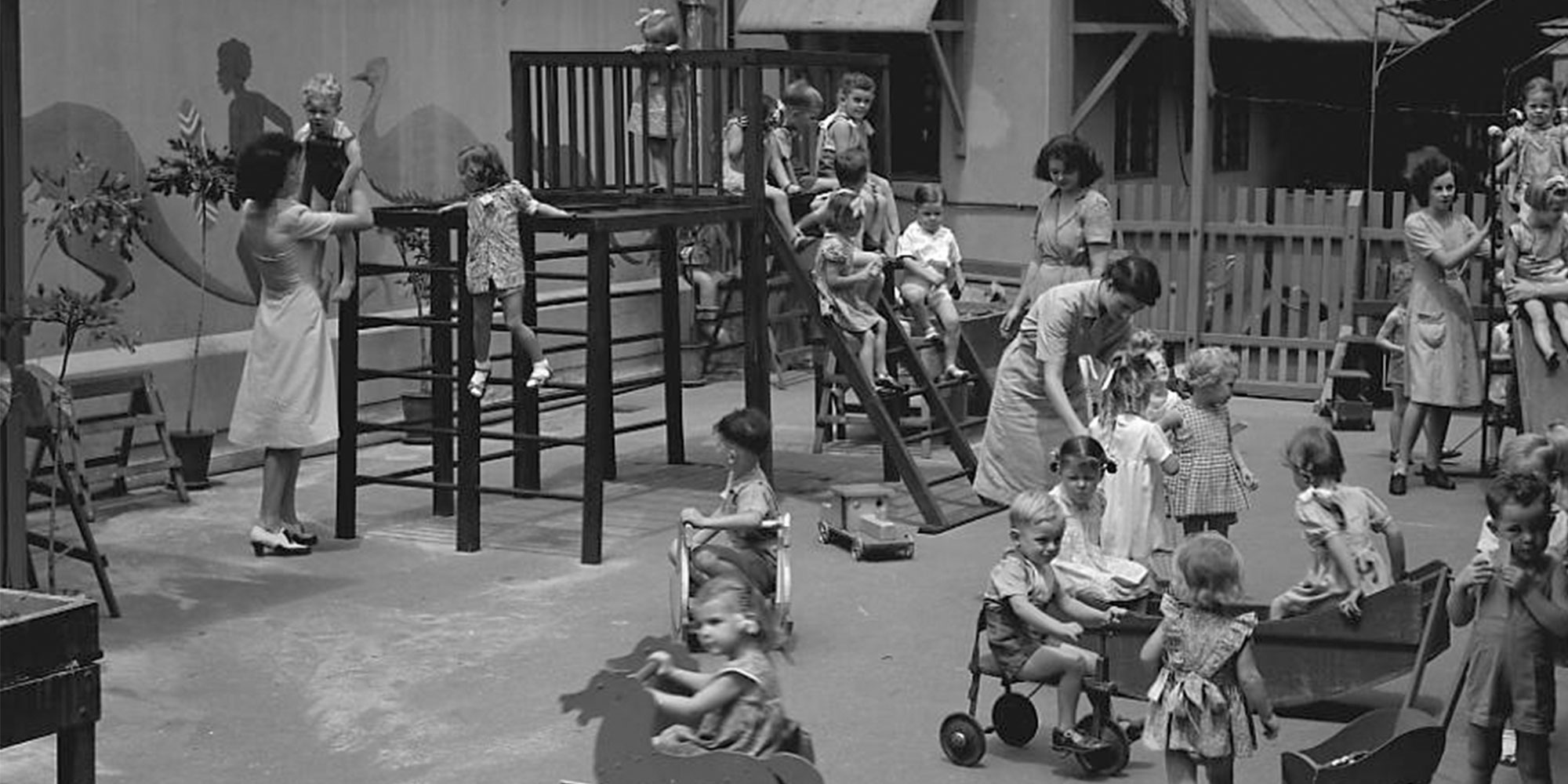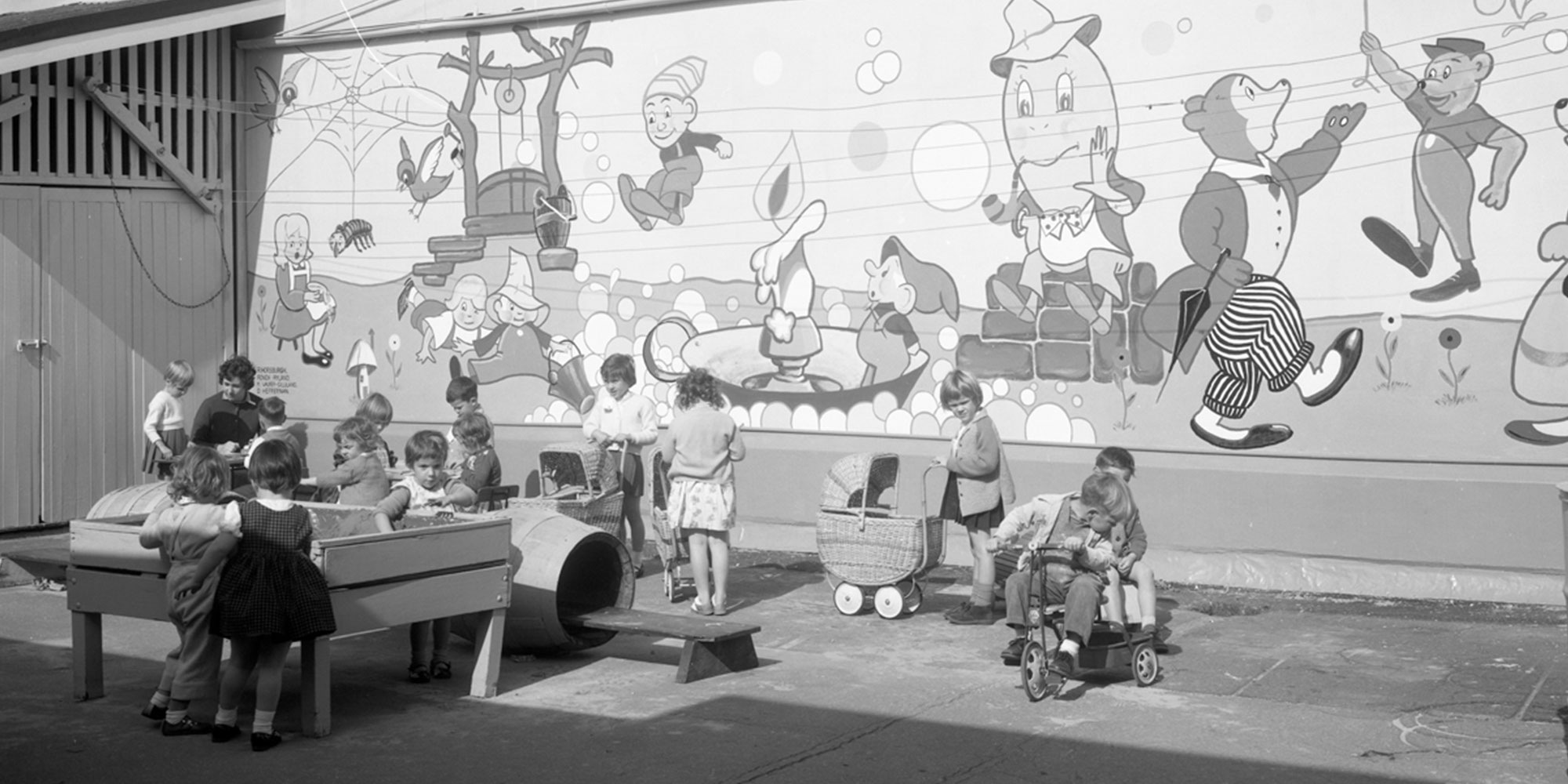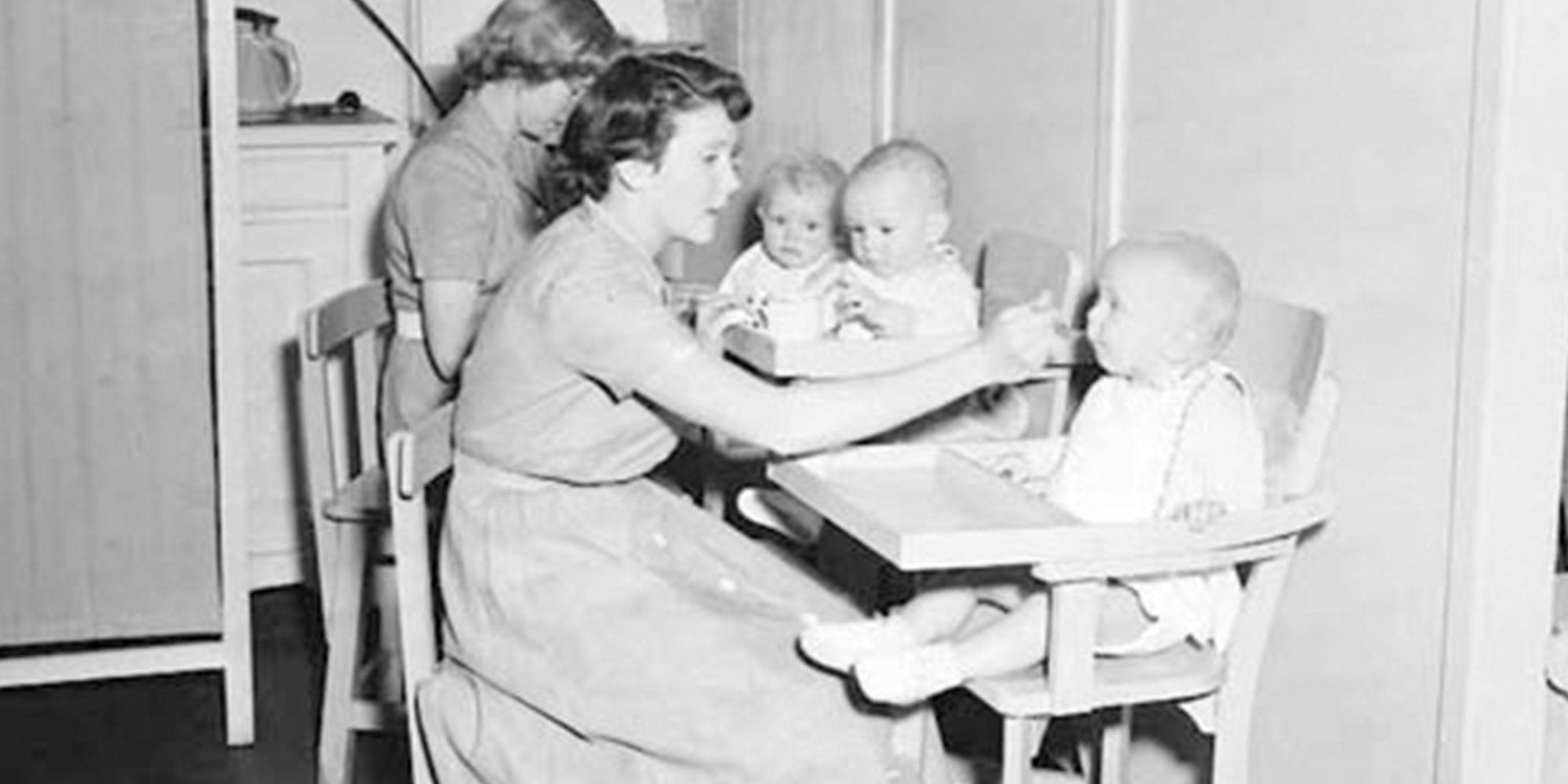During the interwar period, a group of young mothers in Brisbane started a circle that was dedicated to fostering interest in the recently introduced concept of kindergarten education. The onset of the Second World War saw this burgeoning interest quickly change to demand, as many women joined the war effort from home.

The Second World War was an important milestone in Brisbane City Hall’s history as the building became the city’s home-front hub. The beginning of this involvement was a public meeting held in City Hall that focused on organising the voluntary war effort of Queensland women.
Throughout the 1940s, City Hall hosted patriotic rallies and march-pasts as well as morale-boosting dances. The building underwent minor renovations to repurpose spaces that accommodated a range of home front activities, including housing voluntary organisations and air raid shelters.
Many of the women contributing to the war effort on the home front were employed or volunteering with civilian war organisations based in the city. In response to this growing female workforce, City Hall opened a Mother’s Room in 1942.
Alongside rising numbers of working mothers were increases in ‘service-widows’, resulting from the ongoing conflict in the Pacific. It was a time of great uncertainty, with many women feeling overwhelmed at the task of raising children alone. In 1943 a committee of voluntary workers from Mothercraft, Creche and Kindergarten launched a fundraising appeal for a day nursery in the city. The committee raised 3,200 pounds in just over six weeks, with the support of the Courier-Mail and radio station 4BC, and in June the Kindercraft nursery opened in Queen Street.
Opening to a queue of over 60 women on its first day, this new nursery quickly reached capacity and highlighted a demand for further support. In 1945 Kindercraft was relocated to Level 3 of City Hall, with 16,675 children enrolled in its first year. This relocation made Kindercraft the first civic nursery in Australia, largely staffed by volunteers. Despite being a hub for the war effort, City Hall was still the seat of local government and the early recognition of childcare as a municipal function was well ahead of any general acceptance of the need for childcare in Australia.
Described as the ‘third-floor rooftop’, Kindercraft evokes fondness in Brisbane’s collective memory. For many, time at the centre is their earliest memory of formal childcare. Kindercraft operated until 2009, with City Hall undergoing a significant three-year restoration in 2010.
Following the restoration, in 2013 the space on Level 3 became home to a purpose-built gallery for Museum of Brisbane, where children continue to receive educational experiences and have fun with friends. The legacy of Kindercraft and the place it has in Brisbane’s history forms a special part of the Museum’s story, and the stories that we share on Level 3 today.












